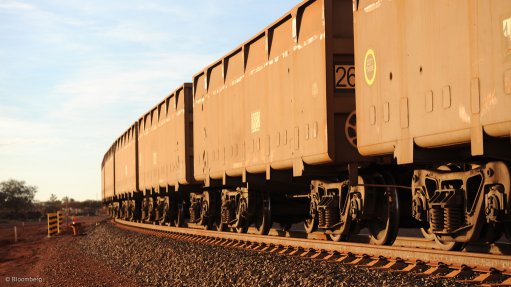
JOHANNESBURG (miningweekly.com) – Iron-ore developer Brockman Mining was considering building a railway line to link its Marillana, and later its Ophthalmia projects, in the East Pilbara, to Port Hedland, the company reported on Friday.
Brockman said it had commissioned engineering group Engenium to evaluate the commercial merits of building its own railway line, citing the prolonged process in accessing current and potential third-party rail in the Pilbara.
The company had not ruled out cooperation with a third-party rail provider, but said that it had to start forging a pathway for its own infrastructure solutions, as a lack of access to rail had significantly delayed its production timetable.
Brockman would consider building a railway line with an initial capacity of 30-million tonnes a year to a designated berth in Port Hedland. It would also consider an option to expand the line to 50-million tonnes a year for other junior mines.
The rail project, which would now progress to the prefeasibility study phase, would be based on a standard gauge design, 26 t axle load and would incorporate a ballast-less track system with continuous rail support.
The design and track structure was expected to reduce capital costs when compared with traditional Pilbara heavy-haul railway systems.
“Brockman has never ceased in working out a logistics solution for its projects in Western Australia, despite market and regulatory constraints,” said business development manager Hendrianto Tee.
Concurrent to the rail development, Brockman would continue to progress Project Maverick, with the aim to produce 2.5-million tonnes from Marillana. The company unveiled its plan for this small-scale mining operation in March, which was based on transporting the ore by truck to the Utah port facility.
The small-scale development was aimed at complementing the longer-term plan for a 20-million-tonne-a-year operation at Marillana based on rail haulage and a new, larger capacity port development.